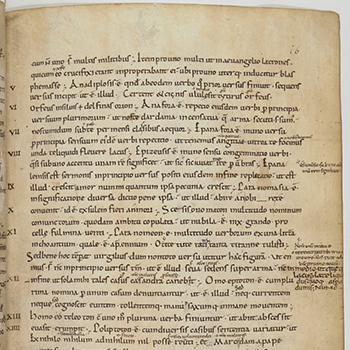Parallel Glosses, Shared Glosses, and Gloss Clustering
Can Network-Based Approach Help Us to Understand Organic Corpora of Glosses?
Keywords:
co-occurrence networks, medieval Latin glossing, Manuscript studies, shared manuscript transmission, gloss parallelismAbstract
Glossing was an important element of medieval Western manuscript culture. Yet, glosses are notoriously difficult to analyze because of their philological triviality, fluid nature, heterogeneity of origin, complex transmission histories, and anonymity. Traditional scholarly approaches such as close reading and genealogical method often do not produce satisfactory results, especially in the cases of gloss corpora that are highly organic, i.e., display the traits listed above to a significant degree. This article outlines a method for analyzing organic corpora of glosses based on their treatment as networks. The theoretical model for the proposed method is the co-occurrence network, a network model in which relationships between entities (nodes) are established based on sharing certain properties or constituent elements (edges). In the case of corpora of glosses, glossed manuscripts are assumed as nodes and glosses that particular manuscripts share in common constitute edges between them. Since gloss parallelism can arise through different processes, including randomness, the article describes two strategies that reduce such noise so that the transmission of glosses can be effectively examined. The method is demonstrated on a representative corpus – the early medieval glosses to the first book of the Etymologiae of Isidore of Seville.

Downloads
Published
How to Cite
Issue
Section
License
Copyright (c) 2023 Evina Stein

This work is licensed under a Creative Commons Attribution-NoDerivatives 4.0 International License.
A Creative Commons Attribution-NoDerivatives 4.0 (CC BY-ND 4.0) license applies to all contents published in JHNR. While articles published on JHNR can be copied by anyone for noncommercial purposes if proper credit is given, all materials are published under an open-access license with authors retaining full and permanent ownership of their work. For details please consult the Open Access and Copyright Notice.

